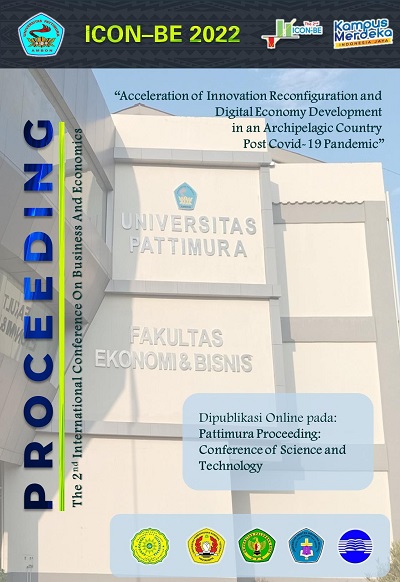IMPLEMENTATION OF RISK MITIGATION IN FREIGHT FORWARDING SERVICE COMPANY
CASE STUDY IN J&T EXPRESS YOGYAKARTA
Abstract
Introduction/Main objectives: This research was conducted with the aim of being able to identify the risk factors that arise in the delivery of goods, determine a good and effective strategy to deal with the risks and impacts that arise in the delivery of goods and make risk management that is right on target with the house of risk (HoR) method to solve problems from goods delivery activities. Indonesia is one of almost countries affected by Covid-19, as a result of this there is a change in the trend of public spending where 90% of their daily needs are met through online shopping. As a result of this trend change, many logistics companies have experienced an increase in demand for goods delivery services, but it is undeniable that this is directly proportional to the problems that arise and the new risks faced by these logistics companies, such as J&T Express. Therefore, researchers conduct study in order to reduce the impact of the risks. Research methods: The sample was taken at a freight forwarding company in Yogyakarta, namely J&T Express. Finding/Results: The findings of this study obtained that there are 21 Risk Events identified with 21 Risk Agents, from the results of risk agents and risk events identified 3 priority risk agents for preventive action, namely (A1) or the impact of Covid-19, the ‘PSBB’, service hours public/office, travel/delivery area restrictions by the community, goods sent not on schedule. (A3) or the recipient's address is wrong, the recipient of the package does not want to pay the bill, the package is damaged, natural disaster and (A11) or the time the package is received by the customer exceeds his estimate (the package was received late). Conclusion: The selected risk agents have been determined based on the application of the Pareto diagram are further analyzed using the House of Risk table phase 2, and obtained 7 mitigation actions or preventive actions (PA). Based on 7 precautions (PA) obtained the highest priority for strategic planning is (PA2) or making reference to the schedule for distributing goods that are adjusted to the new Covid-19 norms with an ETD value of 2472.8 and the lowest strategic planning priority, namely (P4) or refreshment related to product knowlage, SOPs, package handling information with an ETD value amounted to 532
Downloads
References
Hanafi, M. (2006). Risk Management. Yogyakarta: Yayasan Keluarga Pahlawan Negara.
Jokowinarno, D. (2011). Tsunami Disaster Mitigation in the Coastal Area of Lampung. Engineering Journal, 15 (1), 13–20.
Vaughan, E.J., & Elliot, C.M. (1978). Fundamentals of Risk and Insurance. Toronto: John Wiley & Sons Inc.
Kusmantini, T., Guritno, A.D., & Rustamaji, H.C. (2015). Mapping of Supply Chain Risk in Industrial Furniture Base on House of Risk Framework. European Journal of Business and Management, 7 (34): 104–115.
Pujawan, I.N., & Geraldin, L.H. (2009). House of risk: a model for proactive supply chain risk management. Business Process Management Journal, 15(6), 953–967. https://doi.org/10.1108/14637150911003801
Walgito, B. (1987). Metode Penelitian Kuisioner Kualitatif. Bandung: PT. Rosda Karya.
Subagyo, A., Simanjuntak, R., & Bukit, A.I. (2020). Fundamentals of Risk Management. Bogor: Media Indonesia's Discourse Partners.
Arifin. (2011). Qualitative, Quantitative, and R & D Research Methods. Bandung: Alphabet
Copyright (c) 2023 Pattimura Proceeding: Conference of Science and Technology

This work is licensed under a Creative Commons Attribution-NonCommercial-ShareAlike 4.0 International License.












